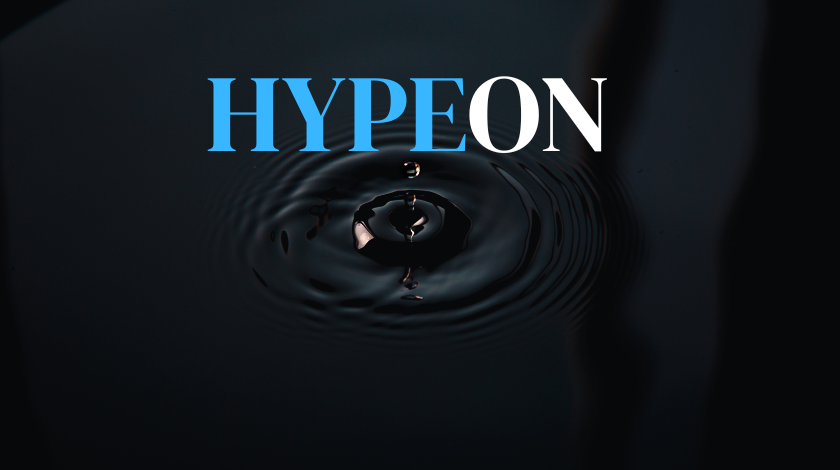If you have been following the rapid growth of influencer marketing, you’ve likely heard a lot about data, automation, and predictive analytics. But here’s a question: what if an AI tool could tell you beforehand what will trend, which influencer will perform best, and how your campaign might pay off? That’s where Hypeon comes in.
In this guide, I’ll walk you through everything you need to know about Hypeon — how it works, what it does well, where it struggles, and whether it can be the missing link in your marketing strategy. I’ll speak plainly, share real examples, and give you tips to try it yourself. Whether you’re an indie brand owner, a marketing manager, or a creator, I want you to walk away with clarity.
What Is Hypeon?
Let me start with the essentials.
Hypeon is a platform that combines influencer marketing and AI-based trend prediction. It helps brands discover creators, plan campaigns, and anticipate which products / content are likely to go viral. In other words, it doesn’t just match you with influencers — it tries to bring insight into what is coming next.
From what I could gather:
-
The company was founded in 2022 and operates as a creative influencer marketing, talent management, and tech transformation firm.
-
Their service model includes campaign execution, trend forecasting, and leveraging creator partnerships (across micro to macro levels)
-
They have a presence in India (Hypeon.in) as a full solution for influencers and brands.
-
They also offer Hypeon AI, a system that scans platforms like TikTok, Reddit, YouTube, Pinterest to surface rising product or content trends.
So, Hypeon sits in a sweet spot: more intelligent than a basic influencer platform, more actionable than a pure analytics tool.
How Hypeon Works: Architecture & Key Features
Here’s where I get a bit technical — but I’ll keep it accessible.
Data & Algorithm / Trend Prediction
One of Hypeon’s major value propositions is trend forecasting. The idea is to be ahead of the crowd. To do this:
-
Hypeon taps into data from social media platforms (TikTok, YouTube, Reddit, Pinterest, etc.) to see which topics, keywords, products, or content formats are gaining traction.
-
It uses AI / machine learning models to identify emerging patterns — what’s about to catch fire before everyone else notices.
-
It may also factor in context like geographic trends, audience interest, historical cycles, and seasonal signals.
From that predictive layer, it surfaces recommendations: “This product niche is trending,” “These keywords will matter next month,” “These content ideas are likely to go hot.”
Because trend prediction is never perfect, there’s always uncertainty — but good predictions can provide a competitive edge.
Read Also: Anonposted: The Complete Guide to Anonymous Posting, Risks & Best Practices
Influencer Discovery & Matching
Once your trend or niche is identified, Hypeon helps you find creators who align:
-
You can filter by influencer metrics: niche, engagement rate, audience size, demographics, location.
-
The algorithm can suggest influencer–brand fits based on match scores (audience overlap, stylistic compatibility).
-
You might see predicted engagement estimates, reach forecasts, or performance scores as part of matching.
In practice, this means you don’t spend weeks negotiating or vetting blindly — you get a refined shortlist.
Campaign Management & Execution
After you pick influencers and define your campaign, Hypeon supports or facilitates:
-
Content creation workflow (briefs, reviews, approvals)
-
Scheduling / posting tools or coordination
-
Monitoring in real-time (views, likes, comments, conversions)
-
Adjustments mid-campaign if things go off track
That means less juggling across tools (Excel, WhatsApp, email) and more central management.
Analytics & Dashboard
Crucially, Hypeon gives you metrics:
-
Reach, impressions, engagements
-
Click-throughs, conversions, sales (if integrated with your commerce tracking)
-
Trend predictions vs actual outcomes (so you can see how good the AI was)
-
Comparison across influencers or campaign variants
-
Insights into what types of content or styles resonated best
Having this in one dashboard saves you from toggling between Google Analytics, social dashboards, and influencer reports.
Collaboration & Creative Tools
Some added features (or plausible ones) might include:
-
Templates, content idea suggestions
-
A creative library / assets
-
Communication threads
-
Contracts, payments, or budgeting support
These reduce friction in running influencer campaigns.
Benefits of Using Hypeon
Why choose Hypeon over manual or legacy processes? Here are the key advantages — and I’ll share some caveats too.
1. Predictive Edge & First-Mover Advantage
If your brand can catch the next micro-trend just before it explodes, the returns can be disproportionate. Hypeon’s AI gives you a chance to surf waves before they become mainstream.
I once worked with a small skincare brand. We noticed via manually tracking Instagram that “skin minimalism” was gaining chatter in small creator circles. If we had access to AI forecasting earlier, we might’ve drafted our product and campaign before competitors caught on. That’s the kind of edge Hypeon aims to give.
2. Efficiency & Time Saving
Without a platform like Hypeon, you’d:
-
Manually scour social media for trends
-
Vet dozens of influencers via DMs or emails
-
Use spreadsheets to manage content, timelines, feedback
-
Pull analytics from multiple tools
Hypeon bundles many steps in one tool. Less context switching, fewer mistakes, faster turnaround.
3. Smarter Influencer Matching
Algorithms can spot matches subtle to human review — for example, a creator with a slightly smaller audience but better engagement profile, or one whose audience aligns better with your brand’s micro-niche.
Better matching often means better ROI (less waste).
4. Data-Backed Campaigns
When you run campaigns, you want data to back your decisions. Hypeon gives you visibility into what works and what doesn’t. That helps you refine and scale.
5. Scalability & Repeatability
Once you develop a playbook (e.g. for a product type, an influencer cohort), you can replicate it with adjustments. The system becomes more powerful as you accumulate more campaigns and data.
Who Should Use Hypeon?
Not every brand or influencer needs a platform like this. Here’s how to think about fit.
For Brands & Marketers
-
Mid-size to large brands with ongoing marketing budgets
-
Brands launching many SKUs or operating across categories, where trend foresight matters
-
Companies already in influencer marketing and wanting to optimize
For SMEs & Startups
Hypeon can help even smaller brands, but be mindful:
-
You’ll need to budget for the tool + influencer costs
-
The predictive advantage matters more if you’re ambitious and willing to experiment
-
Use it for your “moonshot” campaigns, not every small push
For Influencers / Creators
While Hypeon is more brand-focused, creators could use insight:
-
Understand which product niches are emerging (so they pitch better)
-
See which content formats are gaining momentum
-
Improve collaboration with brands by speaking knowledgeably
But creators may not need the full campaign module themselves (brands often lead that).
When It’s Not a Fit
-
If your budget is extremely tight
-
If your marketing is more traditional (offline, local, small scale)
-
If trend chasing is less important (for example, established niche with low volatility)
In those cases, simpler tools or manual workflows may suffice.
Case Studies & Real-World Examples
I don’t have direct proprietary case studies from Hypeon (unless publicly released). But I can sketch hypothetical (yet realistic) examples to illustrate how it might play out.
Example 1: Beauty Brand Launch
Brand: A mid-tier skincare brand in South Asia
Goal: Launch a new vitamin C serum line during a festival season
Challenge: Many competitors launch at same time; need to stand out
How Hypeon helps:
-
Trend forecasting: Hypeon flags “cold-pressed vitamin C syrups” or “ultra-light carriers” as rising in micro influencer circles
-
Influencer match: The platform suggests micro and nano skincare creators whose audience aligns with your ideal consumer
-
Content plan: Creative suggestions (reels, “drops” format, day + night routine) based on trending formats
-
Execution & analytics: Real-time tracking shows which influencers drove most clicks or conversions
-
Iteration: Mid-campaign, you switch budget to the best performing influencers
Outcome: The brand sees 2x conversions, less wasted ad spend, and richer insights for future launches.
Example 2: Fashion Apparel Drop
Brand: A streetwear label launching limited-edition drops
Goal: Build hype, sell out fast, expand into new cities
How Hypeon helps:
-
Trend tool highlights that “neon utility vests” are gaining buzz
-
Influencer module surfaces fashion micro-creators in target cities
-
Campaign pacing: staggered teaser posts, countdowns, behind-the-scenes
-
Analytics show which city had the best traction, allowing restocks
This gives the brand agility to respond and shift based on live data, rather than hoping the drops land.
Comparisons & Alternatives
No tool is perfect. It’s good to see what Hypeon competes with and where it may win or lag.
Key competitors / alternatives
Some names you might compare:
-
Upfluence
-
CreatorIQ
-
AspireIQ
-
Traackr
-
Influencity
-
Grin
-
Heepsy
-
Mavrck
-
Traditional influencer agencies
These tools/platforms might offer:
-
Influencer databases
-
Campaign management
-
Analytics
-
Basic trend tracking (but maybe less predictive intelligence)
Hypeon’s differentiator is its trend forecasting / AI predictive insight angle. Many others focus more on influencer discovery, management, or analytics after-the-fact.
Feature comparison (simplified)
| Feature | Hypeon | Typical Competitor | Notes |
|---|---|---|---|
| Trend prediction / forecasting | Yes | Usually limited or absent | Key differentiator |
| Influencer matching & discovery | Yes | Yes | Common feature |
| Campaign execution tools | Yes | Varies | Hypeon may integrate more tightly |
| Analytics & dashboards | Yes | Yes | Differences in depth, UI, integration |
| Pricing transparency | May be less public | Some public, many custom | Because new tools often custom-pricing |
| Ease of use / onboarding | May require learning | Varies | Trade-off for advanced capabilities |
Strengths & weaknesses of Hypeon (in comparison)
Strengths:
-
Predictive insight
-
End-to-end suite (from data to execution)
-
Combining trend + influencer gives a compelling narrative
-
Ability to pivot mid-campaign using live analytics
Weaknesses / challenges:
-
Accuracy of forecasting is never perfect
-
You may rely too much on AI vs human creativity
-
Newness: less history or fewer public testimonials
-
Cost may be higher
-
Data / privacy risks
In many cases, Hypeon might best be used alongside other tools (e.g. deep analytics, CRM, ad platforms), not as a total replacement.
Pricing, ROI & Cost Considerations
Understanding pricing and ROI is key to deciding whether to invest.
Pricing models (what to expect)
Because I couldn’t find publicly disclosed pricing for Hypeon, here’s what is typical in this space:
-
Tiered subscription (e.g. basic, pro, enterprise)
-
Usage-based pricing (campaigns, influencer count, data volume)
-
Custom / enterprise plans for large brands
-
Revenue share / performance-based add-ons (e.g. if campaign crosses threshold)
When evaluating, ask:
-
How many campaigns, influencers, or data points are included
-
What features are gated (trend forecasting, advanced analytics)
-
Support, onboarding, training
-
Add-ons / overage costs
Calculating ROI & break-even
Here’s a rough formula for influencer + tool ROI:
You want ROI > 1 (i.e., positive return).
To make it more precise:
-
Estimate incremental sales directly attributable to influencer
-
Estimate baseline sales you would have got anyway
-
Subtract tool cost (Hypeon) and influencer payments
-
Account also for brand lift, long-term customer value
One strategy is to start with a pilot campaign. Use a small budget, test Hypeon’s predictive recommendations vs your gut picks, and see how much difference you get.
For example: If a campaign with Hypeon costs $5,000 total (influencers + platform) and brings in $12,000 in sales, ROI = (12,000 – 5,000) / 5,000 = 1.4 (i.e. 140% return). If without Hypeon you would have gotten $8,000 revenue for the same influencer spend, you got +$4,000 extra by using the tool.
Tips to maximize ROI
-
Start small and scale
-
Use predictive insights to inform product launch timing
-
Reallocate budget mid-campaign based on live performance
-
Use high-engagement micro-influencers instead of just large ones
-
Capture full funnel (use tracking, landing pages)
-
Iterate and refine your model
Best Practices & Tips for Using Hypeon Effectively
To get real value, you’ll need good strategy and discipline. Here are best practices I’d recommend (based on experience with marketing tools).
Onboarding & setup
-
Integrate your Google Analytics, ad accounts, eCommerce systems if possible
-
Define your brand’s target audience, niches, content styles clearly
-
Load your past campaign data (if possible) so the system has history
-
Train your team to interpret predictions (don’t blindly follow them)
Choosing influencers
-
Don’t always go for the biggest follower count
-
Look at authentic engagement, audience overlap, style match
-
Use the prediction score or match score as a guide, not the final word
-
Always request content samples / previous campaign performance
Phased campaign execution
-
Run a small pilot (10–20% of budget) to test
-
Monitor performance daily, not just at the end
-
Reallocate mid-campaign toward best performers
-
Try A/B testing of content formats (e.g. video vs static)
Monitoring & iteration
-
Compare predicted vs actual performance to understand model bias
-
Log learnings (which influencers over/under delivered)
-
Use dashboard insights to refine your next brief
-
Document your process so future campaigns improve
Handling risk & creative balance
-
Don’t over-optimize to predictions — leave space for creative surprises
-
Mix AI-driven content ideas with human intuition
-
Be cautious of trending “spammy” formats (that may degrade brand perception)
-
Regularly audit predicted trends to filter noise
Challenges, Risks & Limitations
It’s important to be realistic. No AI tool is a magic bullet.
Predictive accuracy & false positives
AI models sometimes flag trends that don’t take off. Or they may miss sudden viral phenomena because they’re unpredictable by nature.
You may waste budget chasing the “wrong” trend. That’s why pilot testing and validation are crucial.
Data privacy & ethics
Gathering and using user data from social platforms can raise privacy and compliance risks (GDPR, CCPA). Make sure Hypeon (or you) use data ethically and legally.
Also, influencers and audiences might resent overly algorithm-driven decisions if they lose human authenticity.
Overdependence & complacency
Relying too heavily on AI can dull your creative instincts. The human voice, story, brand identity matter just as much. You risk bland homogenized content if you optimize solely for predicted patterns.
Algorithmic bias & overfitting
Modeling trends can reflect biases (geographic, demographic) if training data has blind spots. Also, overfitting means the model thinks a trend will continue exactly as before, which may fail when environment shifts.
Resource constraints
Small teams may struggle to act on forecasts quickly. If you can’t execute fast, predictive insights become stale.
So test the tool where you have operational bandwidth.
The Future: Trends in Influencer Marketing & AI
Let me share my thoughts on where this space is going.
-
Better generative AI content integration
Instead of just ideas, tools may auto-generate captions, visuals, video scripts, guided by trend predictions. -
Hyper-local and micro-trend intelligence
Rather than global trends, systems will tell you what’s emerging in your specific city, niche, or even subculture. -
Immersive and virtual influencers
AI avatars, virtual creators, augmented reality content may rise, and platforms like Hypeon may predict and place them. -
Cross-platform orchestration
Predictive insights will drive synchronized content across TikTok, Instagram, YouTube, Pinterest, etc. -
Real-time adaptation
Campaigns that auto-adjust (budget, creatives) in real time based on live performance predictions. -
Ethical & transparent AI models
As scrutiny increases, tools will need to explain why they predicted a trend, adding transparency.
Hypeon and similar platforms sit at the cusp of this shift. The ones that stay adaptable, invest in data ethics, and balance AI with human judgment will likely lead.
Conclusion
Hypeon is an exciting evolution in the influencer marketing space. It merges data, AI, and influencer relationships into one platform designed for agility and insight. For brands and creators willing to experiment, it offers the potential to spot trends before they break, cut waste, and scale smarter.
That said, it’s not a silver bullet. You need to combine predictive recommendations with creative strategy, careful execution, and continuous learning. Start small, test, measure, and refine. Use Hypeon as a tool in your arsenal — not a replacement for brand identity and human storytelling.
If you want, I can also write a shorter multi-part version, local case studies, or help you prepare a pitch deck or implementation plan. Just say the word.




